The Everest Base Camp Trek is truly fantastic in the beautiful Himalayan region. A hike with unfathomable beauty and incredible wilderness epitomizes inner strength! The Everest Base Camp Trek is a lifelong dream journey for many trekkers, with breathtaking views of snowcapped peaks and mountain ranges.
Choosing the ideal time to trek to Everest Base Camp is essential to take in the breathtaking views along this incredible route fully. Knowing the area's weather patterns, you can enjoy spectacular scenery and make lifelong memories. The best seasons to trek are spring (March-May) and Autumn (October–November) when the skies are clearer and the weather is more consistent. These peak seasons guarantee trekkers a pleasant hiking experience because of the pleasant temperatures and colorful scenery.
On the other hand, summer trekking can be difficult because of the intense monsoon rains and poor visibility. Your trekking time must be carefully chosen to appreciate the Himalayas' breathtaking beauty fully. A well-thought-out adventure plan will allow you to fully appreciate the stunning surroundings while taking advantage of clearer skies and more comfortable conditions.
With careful preparation, a proper packing list, and research, you can create a trekking adventure that fulfills your objectives and lets you completely take in the stunning Himalayas landscape. Numerous factors need to be considered, including the number of trekkers on the routes, the availability of knowledgeable tour guides, and annual changes in the weather.
The prime trekking seasons are Spring (March to May) and Autumn (September to November), offering stable weather and clear skies. While helicopter tours are feasible whenever the weather permits outside the monsoon season, winter treks shouldn't be dismissed. With proper preparation for colder temperatures, winter can reward you with serene trails and crystal-clear mountain vistas.
As you prepare for your trek, take a moment to consider what you hope to gain from the experience. Are you eager to see Base Camp alive with climber's gearing up for their ascent, or would you rather enjoy the peace with fewer fellow trekkers? Do you prioritize having clear skies for capturing stunning photographs? Your personal preferences will aid in determining the best time for your adventure.
To help you plan your adventure at the time that best suits your goals, this blog post about the Best Time to Visit Everest Base Camp attempts to offer thorough insights into the trekking seasons.
Spring (March – April - May): The best time for Everest Base Camp Trek
The optimal time to trek to Everest Base Camp is spring, from March to May. Spring (March to May) is usually the most appropriate time for the magnificent Everest Base Camp trek because it provides hikers with a perfect balance of pleasant weather, breathtaking scenery, and cultural diversity.
In lower elevations like Lukla (2860m), temperatures in the daytime range from 10°C to 18°C, making trekking comfortable. However, daytime temperatures can reach 3°C to 7°C, and nighttime temperatures can drop from 5°C to 8°C as you ascend to higher elevations, such as Everest Base Camp (5364m). The emergence of Nepal's national flower, the rhododendron, which adorns the trails with vivid shades of pink, white, and red, particularly from March to April, is one of the season highlights. You can sometimes get a bit of a heat haze in late April and May.
Best time to trek to Everest Base Camp
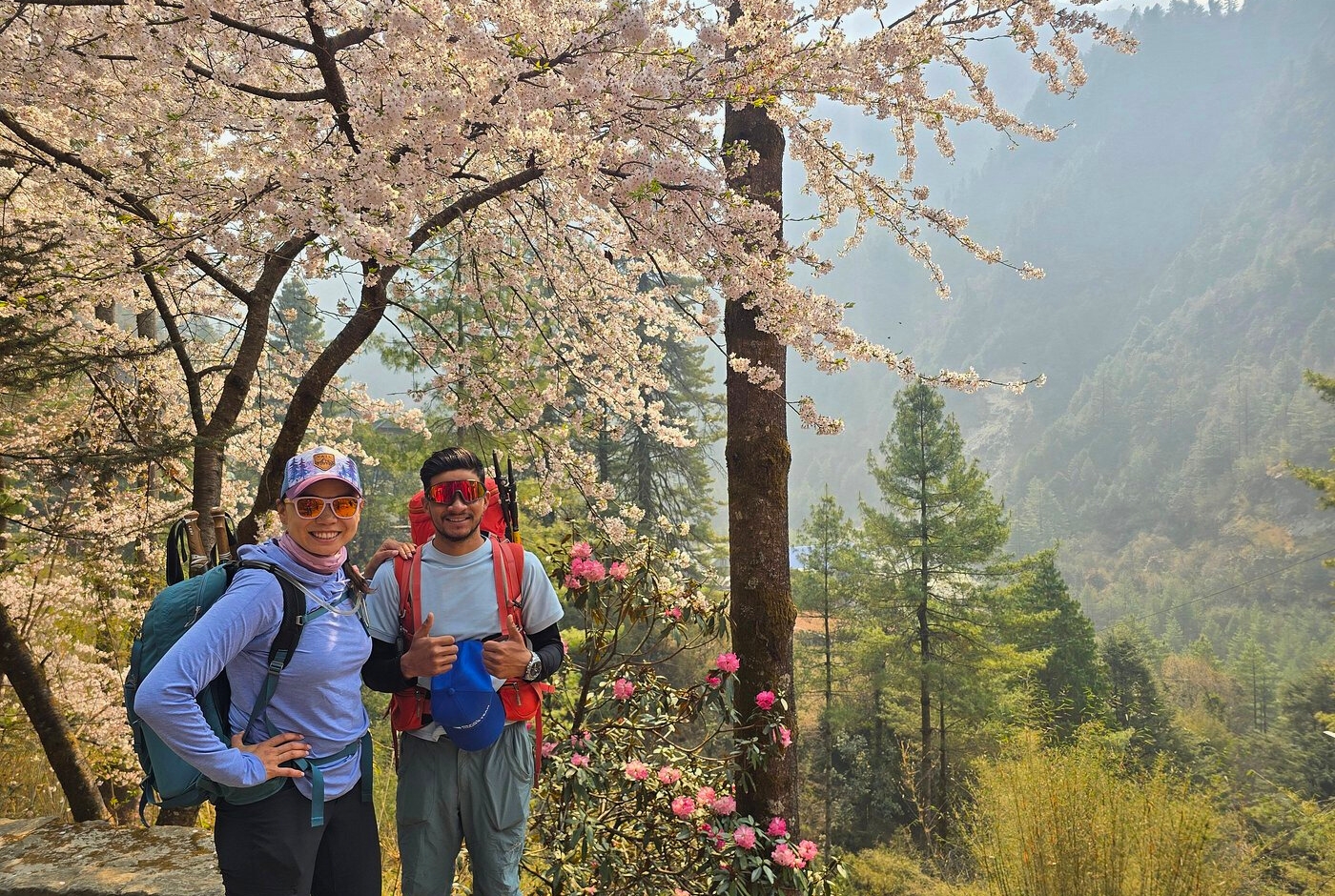
When the skies are clear, this natural phenomenon provides hikers with sweeping views of the Himalayan peaks such as Mount Everest, Lhotse, and Ama Dablam. The climbing season also begins in the spring when Base Camp is teeming with climbers getting ready for summit ascents. Thanks to this vibrant atmosphere. Trekkers have a rare chance to observe the mountaineering community in action. Flight operations to Lukla, the entry point to the Everest region, are generally more dependable due to the springtime weather, which also lowers the possibility of delays and cancellations. But because of the season's popularity, teahouses and trekking routes can get crowded. To guarantee a hassle-free trekking experience, reservations for hotels and flights should be made in advance.
In conclusion, the Everest Base Camp trek is best done in the spring when there is a perfect balance of pleasant weather, scenic beauty, and cultural vibrancy.
Autumn (Sept-Oct-Nov) - Popular season to visit the EBC Trek
Thanks to the mild temperatures and vibrant landscapes, a delightful hiking experience is assured during these seasons. Choosing the right time for your trek is essential to fully enjoying the stunning beauty of the Himalayas. By planning, you can benefit from more favorable weather and clearer skies, allowing you to soak in the magnificent views without distractions. Proper timing enhances your experience and ensures you make the most of your adventure in this breathtaking landscape. Additionally, being mindful of the seasons can lead to unforgettable moments as you witness nature at its finest during your journey. Embrace the spectacular views and create unforgettable memories on your journey!
Popular time to hike Mount Everest Base Camp

Most people agree that the best time of year to trek to EBC (Everest Base Camp) is in the fall, from late September to November. Trekkers can enjoy a perfect balance of nice weather, cultural events, and stunning Himalayan scenery during this time.
Trekking conditions are comfortable in the fall when daytime temperatures in lower elevations like Lukla (2860m) range from 10°C to 20°C (50°F to 68°F). At higher elevations such as Everest Base Camp (5364m) and Kala Patthar (5455m), daytime temperatures can reach 5°C to 10°C (41°F to 50°F) while nighttime lows can drop to -10°C to -15°C (14°F to 5°F). The season's stable weather guarantees clear skies and unhindered views of Everest, Lhotse and Ama Dablam.
Fall trekking allows travelers to experience Nepal's rich cultural legacy to the fullest. The important festivals of Dashain and Tihar, which take place around this time of year, are distinguished by vibrant decorations, traditional music, and exuberant communal celebrations. By participating in these festivities, hikers can gain a great deal of knowledge about the local traditions and customs. Furthermore, the friendliness and warmth of the locals during these festivities make trekking more memorable and enriching, making it an incredibly unique time to visit the area. The atmosphere remains lively and social even though more people hike to Everest Base Camp in the fall, increasing foot traffic on the trails. Along the trails, hikers from around the globe strengthen their relationships by sharing stories and experiences. Due to fewer hikers, the trail will be more tranquil in late November, offering a more solitary experience for those seeking a quiet retreat.
For those seeking a more solitary experience, late November offers a quieter trail as the number of hikers decreases.
In conclusion, autumn is the ideal time to hike to Everest Base Camp due to its stunning weather, vibrant culture, and breathtaking natural surroundings. This time of year promises an unforgettable journey, regardless of whether you are drawn to the vibrant festivals or the allure of the mountains.
EBC Trek in Monsoon Season (June-Aug)
Unlike the more popular spring and fall treks, trekking to Everest Base Camp in Nepal during the monsoon season (July to mid-September) offers a unique perspective of the Himalayas. Despite the difficulties that come with this time, there are also chances for solitude and a closer relationship with nature.
Rainfall occurs frequently during the monsoon months, particularly at lower elevations, making the trails muddy and slick. But as you rise above 3500 meters, the trails get more straightforward to navigate, and the precipitation drops. Higher altitudes can experience nighttime lows of -5°C (23°F), while lower regions can experience daytime highs of up to 22°C (71°F).
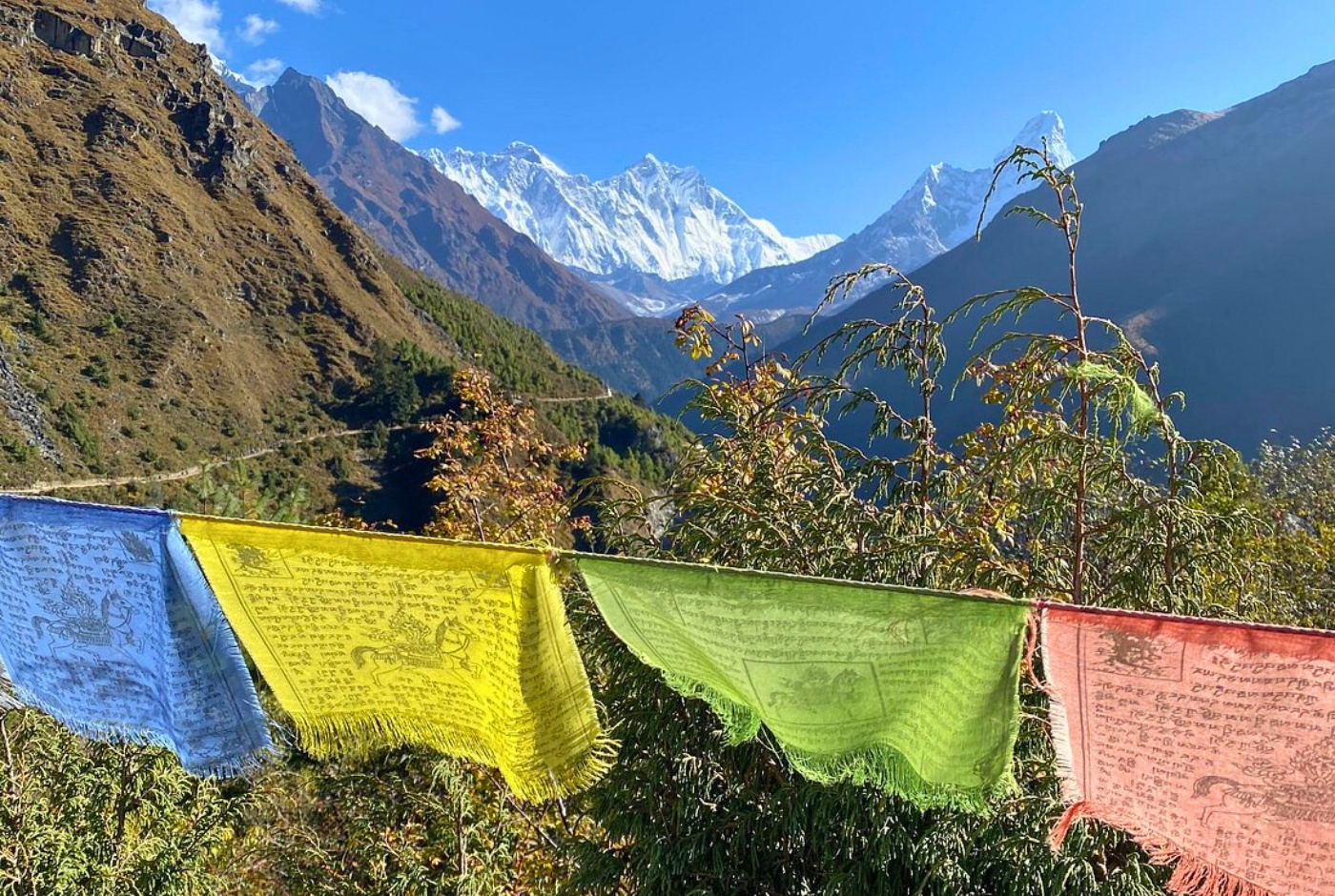
In addition to the benefits of the experience, the monsoon season brings fewer hikers, which makes the terrain more tranquil and isolated. The rain rejuvenated the trail's surroundings, which brought blooming wildflowers and lush greenery. Notwithstanding its beauty, this dynamic landscape differs from the dry seasons.
Hikers need to exercise caution because trails can be hazardous due to mud and the potential for landslides. Because of mud and the possibility of landslides, trails can be dangerous, so hikers must use caution. The damp conditions, especially in lower elevations, are more conducive to leeches and insects. In addition, bad weather and visibility make flights to and from Lukla more prone to delays or cancellations.
Good preparation is the key to a successful monsoon trek in the Everest region. Wearing waterproof jackets, pants, and backpack covers is crucial. Insect repellent helps keep leeches and mosquitoes away, and trekking poles can provide support on slippery surfaces. If your flight is delayed, add extra days to your itinerary.
In summary, trekking in the monsoon season provides an exceptional and tranquil experience despite the challenges. Those willing to take on the challenges will better understand the Everest region's natural beauty, serene trails, and fascinating scenery.
Everest Base Camp Hike in Winter Season (Dec-Jan)
Trekking to Everest Base Camp between December and February offers a unique and tranquil experience for daring travelers prepared to face the challenges of winter. You'll feel more alone and peaceful because there won't be as many hikers on the trails, but the severe weather demands preparation and fortitude. Along with trying your endurance, this journey rewards you with stunning snow-covered scenery that few people can see. Enjoying the Himalayas' serene splendor during this time of year can result in lifelong memories and a greater understanding of the untamed power of nature.
Clear skies and cold temperatures are hallmarks of winter in the Everest region. Lukla (2860m) and other lower elevations can experience daytime temperatures of up to 10°C (50°F) and nighttime lows of -5°C (23°F). Higher altitudes such as Everest Base Camp (5364m) see daytime temperatures between -5°C and -10°C (23°F and 14°F) and nighttime lows of -20°C (-4°F) or lower. Despite the cold, the area receives little precipitation, allowing clear skies and good views of the snow-capped peaks.
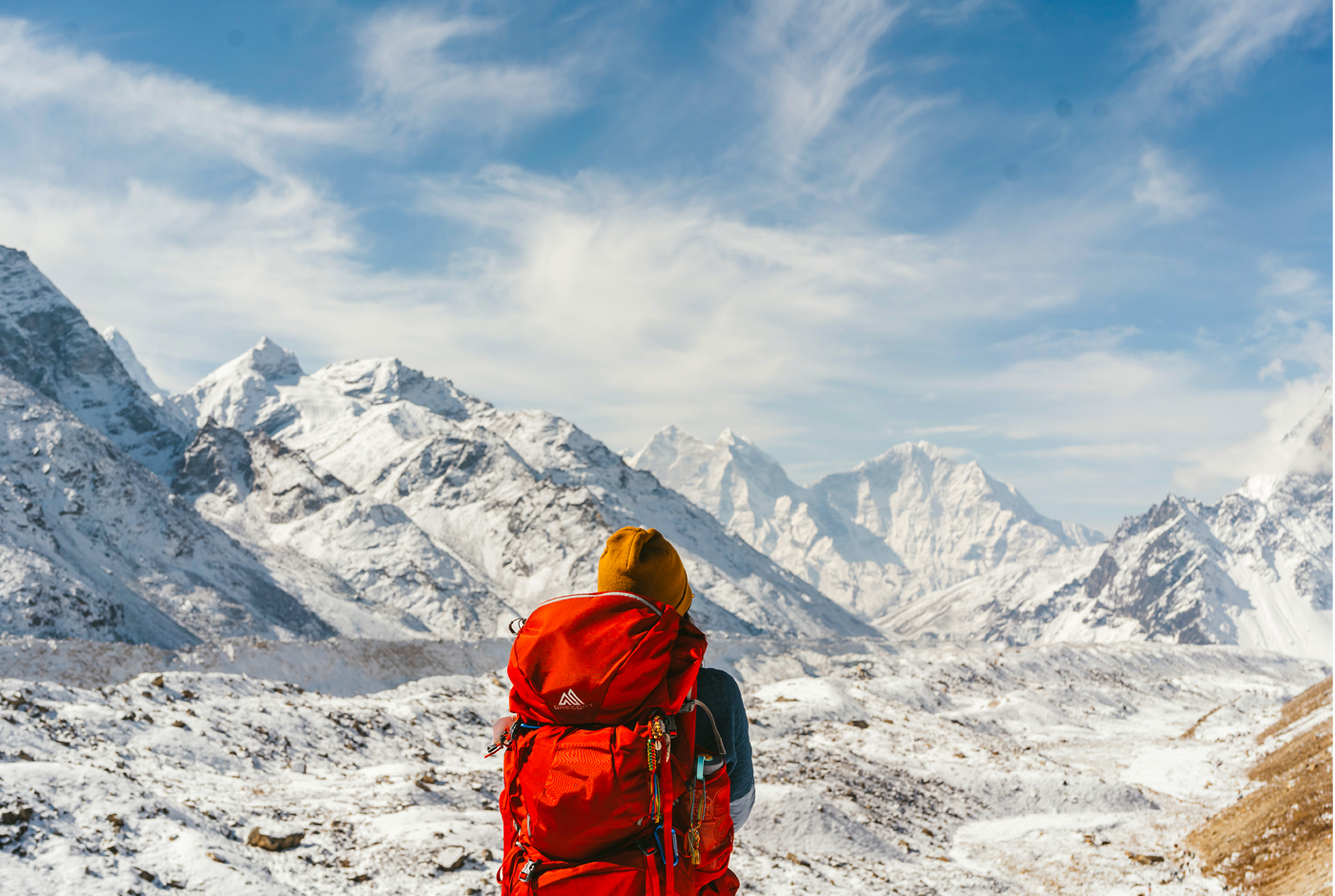
Trekking in the winter has several benefits, one of which is that there are fewer hikers on the trail. The journey is more tranquil during this off-peak time of year when there are plenty of chances to take in the Himalayas' natural splendor without being distracted by big crowds.
The overall trekking experience is also improved by the distinctive and beautiful views that the snow-covered landscapes provide. However, several difficulties come with winter as well. Trekkers must be adequately prepared for the bitter cold by carrying winter clothing, waterproof boots, and high-quality sleeping bags. Planning carefully for accommodations is essential because some tea houses at higher elevations might close during this time. Snow and ice can also make some parts of the trail harder to follow, which raises the possibility of trips and falls.
Adding a few extra days to your itinerary is a good idea to account for any potential disruptions, as flights to and from Lukla are more likely to be delayed or canceled during the winter. Despite these challenges, a winter trek to Everest Base Camp can be a rewarding and fantastic experience for those seeking solitude and prepared for the cold. Winter trek to Everest Base Camp can be a fulfilling and remarkable experience for those looking for solitude and ready for the cold despite these difficulties.
Most Frequently Asked Questions about Everest Base Camp Weather
How cold does it get at Everest Base Camp?
The temperature varies significantly at Everest Base Camp. All year long, with winter shows the coldest temperatures. The temperature at night can be anywhere from 20°C to -5°C during the day. Significant temperature drops are possible, sometimes falling below -20°C in the wintertime.
Winter (December–February): The average daytime temperature is five degrees Celsius. At night, the temperature can drop to -10°C, while during the day, it can reach 12°C (41°F to 54°F) between 14°F and 23°F or 5°C. In severe cold, temperatures can drop to -10, nighttime temperatures of 20°C to -30°C (-4°F to -22°F).
Spring (March-May): Daytime temperatures in the spring range from 5°C to 10°C. (41°F to 50°F). With a possible -10°C drop at night or lower.
Summer (June–August): Daytime highs are between 10°C and. Even at night, temperatures can drop to 15°C (50°F to 59°F). A chance for temperatures to fall below freezing.
Autumn (September-November): Daytime highs and lows varied. 10°C to 20°C (50°F to 68°F), but it can get cold at night. Frigid, possibly falling to -10°C or lower.
Several factors are key to extreme cold in the region. Elevation is one of the factors that contributes to extreme cold. As you move toward Everest Base Camp, the air gets thinner and more rarefied. Strong winds can raise the chill factor, and temperatures can drop. It feels even colder when winter arrives, and there is less sunlight, which could lower temperatures.
Everest Base Camp Temperature by Month
| Month | Daytime Temperature (°C) | Nighttime Temperature (°C) | Conditions |
| January | -20 to -10 | -25 or lower | Coldest month, clear skies; limited snowfall. |
| February | -15 to -5 | -20 | Winter fading, slightly warmer days, chilly nights. |
| March | -10 to 0 | -15 | Beginning of spring, increasing sunshine; occasional snowfall. |
| April | -5 to 5 | -10 | Mild days, cold nights; blooming rhododendrons. |
| May | 0 to 10 | -5 | Warmest spring month, clear views; peak climbing season. |
| June | 5 to 15 | 0 | Start of monsoon, warmer days; possibility of rain. |
| July | 10 to 20 | 5 | Peak monsoon, heavy rainfall, lush landscapes. |
| August | 10 to 20 | 5 | Continued monsoon; trails may be slippery; fewer trekkers. |
| September | 5 to 15 | 0 | End of monsoon, clear skies, comfortable temperatures. |
| October | -5 to 5 | -10 | Stable weather, clear views; popular trekking month. |
| November | -10 to 0 | -15 | Cold nights, clear days, fewer crowds. |
| December | -20 to -10 | -25 or lower | Onset of winter; very cold; clear skies. |
What months can you hike to Everest Base Camp?
These are the best months to hike to Everest Base Camp. Seasons include spring (March to May) and fall (September to November). Clear skies and other favorable weather conditions are available during these times. The pleasant weather and decreased likelihood of snowfall or rain make the trek easier. Safer and more fun. While trekking is possible year-round, these two seasons are the best. A pleasant climate and breathtaking scenery.
Spring (March through May): Mild weather is a defining feature of this season. Temperatures, unclouded skies, and an abundance of greenery. But it can be. Prices may be higher because it's crowded, particularly in April and May.
Autumn (September to November): The weather during this time brings dry, clear skies. Circumstances, as well as pleasant temperatures. At night, however, it may be colder. The trail might be more peaceful because it isn't as crowded as it is in the spring. Experience trekking.
Even so, winter (December to August) and monsoon season (June to February) are also possibilities, but they come with drawbacks like low visibility. Intense rain and bitter cold, in that order. Planning your trek is, therefore, necessary.
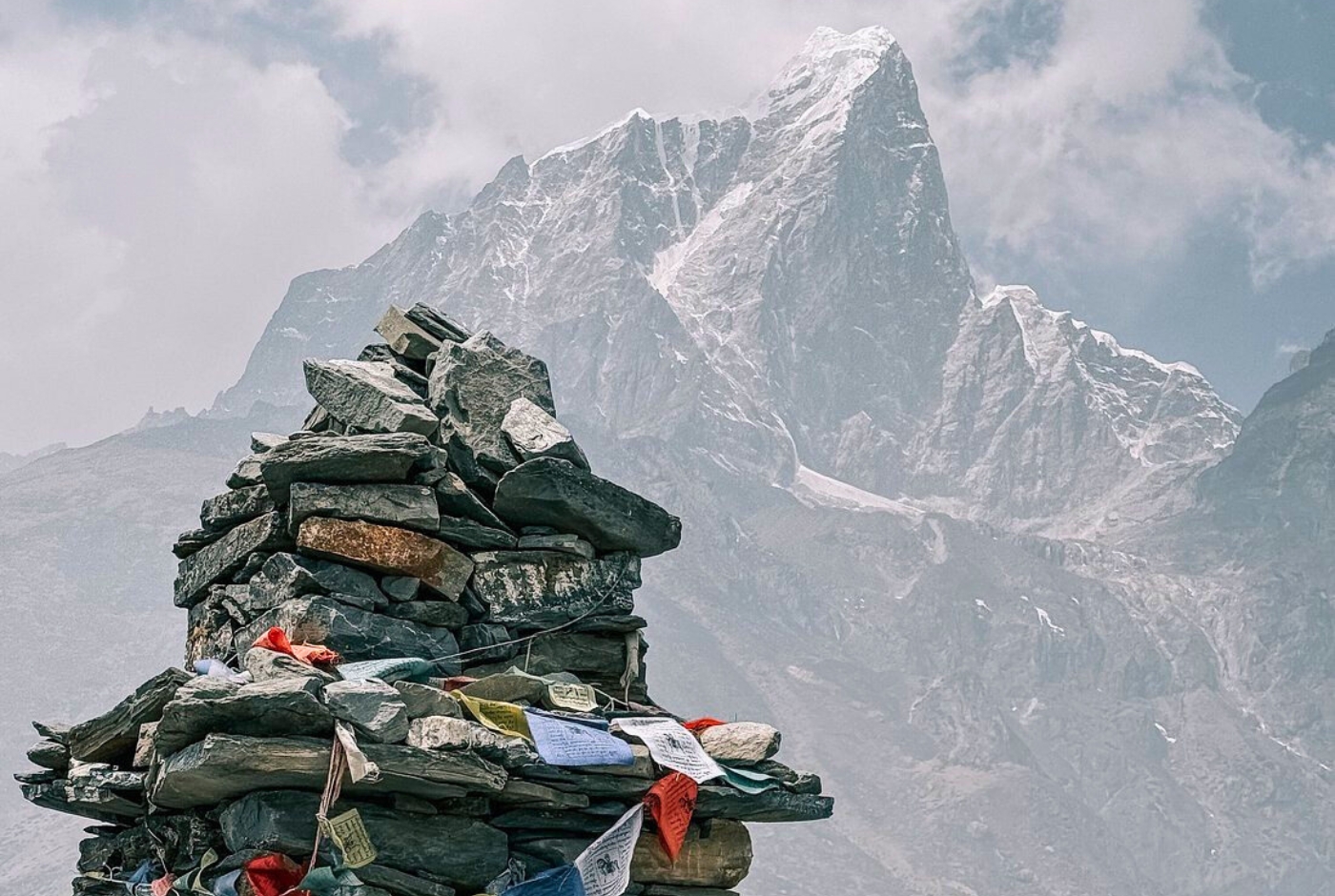
The best time to visit is spring or fall for the most fantastic experience. You can truly appreciate the beauty around you during these seasons because of the perfect weather and breathtaking scenery. The fall season offers stunning foliage and clear skies, while the spring brings vivid blooms and abundant leaves. Your trip will be genuinely unforgettable because both seasons provide the ideal setting for exploration. Every moment, whether hiking among rhododendrons in bloom or taking in the vibrant fall foliage, will leave you with enduring memories.
Is April a good time to visit Everest Base Camp?
In the Everest region, April is a season of change as winter ends. Bright rhododendron blooms adorn the trails, bringing them to life. Landscape in pink, white, and red tones. Additionally, the forests are lush. Every step is a sensory experience because of the fresh scent of spring.
The weather in April is usually steady and ideal for hiking. Daytime temperatures in places like Namche Bazaar are lower in elevation. Range from 2°C to 15°C, offering comfortable conditions for those at 3440m. Trekking going up to higher elevations, such as Gorak Shep (5180m). Evening temperatures can be as low as 8°C, and could fall to -4°C.
Views of the sky are unhindered because they are mostly clear. Majestic peaks of the Himalayas. It is necessary to be ready for it, though. Abrupt weather changes occur because mountain conditions can change quickly.
Mount Everest Base Camp best time?

When is the best time to avoid crowds at Everest Base Camp?
The voice of winter is the most silent in Everest Base Camp. December to February. The senses become more acute and slower in cold air. The movement of tourists permits the mountains to breathe freely.
When the frost is deep, you are unlikely to find many people taking this route. Serene, the paths are open, and finding solitude is simpler. But if it feels too cold, think about the edges of the busier seasons. Early spring and late autumn seasons are calm, with fewer people walking around. Skies embrace those who pay close attention and move with deference.
Which month is best for the Everest Base Camp trek?
For the Everest Base Camp trek, March is usually the best month. October, November, September, May, and April. These months offer ideal weather with comfortable temperatures and clear skies. Temperatures and a low chance of interruptions due to weather.
Trekking is especially popular in the spring (March to May) and fall (September to November) seasons due to their reliable weather and excellent visibility. Trekkers get the privilege to fully appreciate the stunning views during these seasons without worrying about the unpredictable weather, which makes them ideal for exploration. In addition, the overall experience is enhanced by the picturesque backdrop created by the brilliant colors of the spring blossoms and the breathtaking fall foliage. In addition to ensuring comfort, picking these times to go outside also enables you to take in the spectacular views of nature.
Is Everest Base Camp open all year?
The Everest Base Camp trail is open year-round, yes. Each season has a distinct voice and spirit. March through May is springtime when the mountains awaken, and the sky clears. Trails become softer, and visitors can move more easily in time with the natural rhythm. At what time? The land becomes quiet once more as autumn arrives, lasting from September to November. As the weather stabilizes, safe passageways are made possible by clear air.
Seasons beyond these mild periods, however, teach more difficult lessons. The valleys are washed over by rain, which tries patience and obscures vision, creating uncertainty in paths. Winter hardens the ground and brings extreme cold. And demands strength with every stride. Deciding to go for a walk in these situations entails accepting nature, learning to be resilient, and embracing challenges.
Best time for EBC Trek
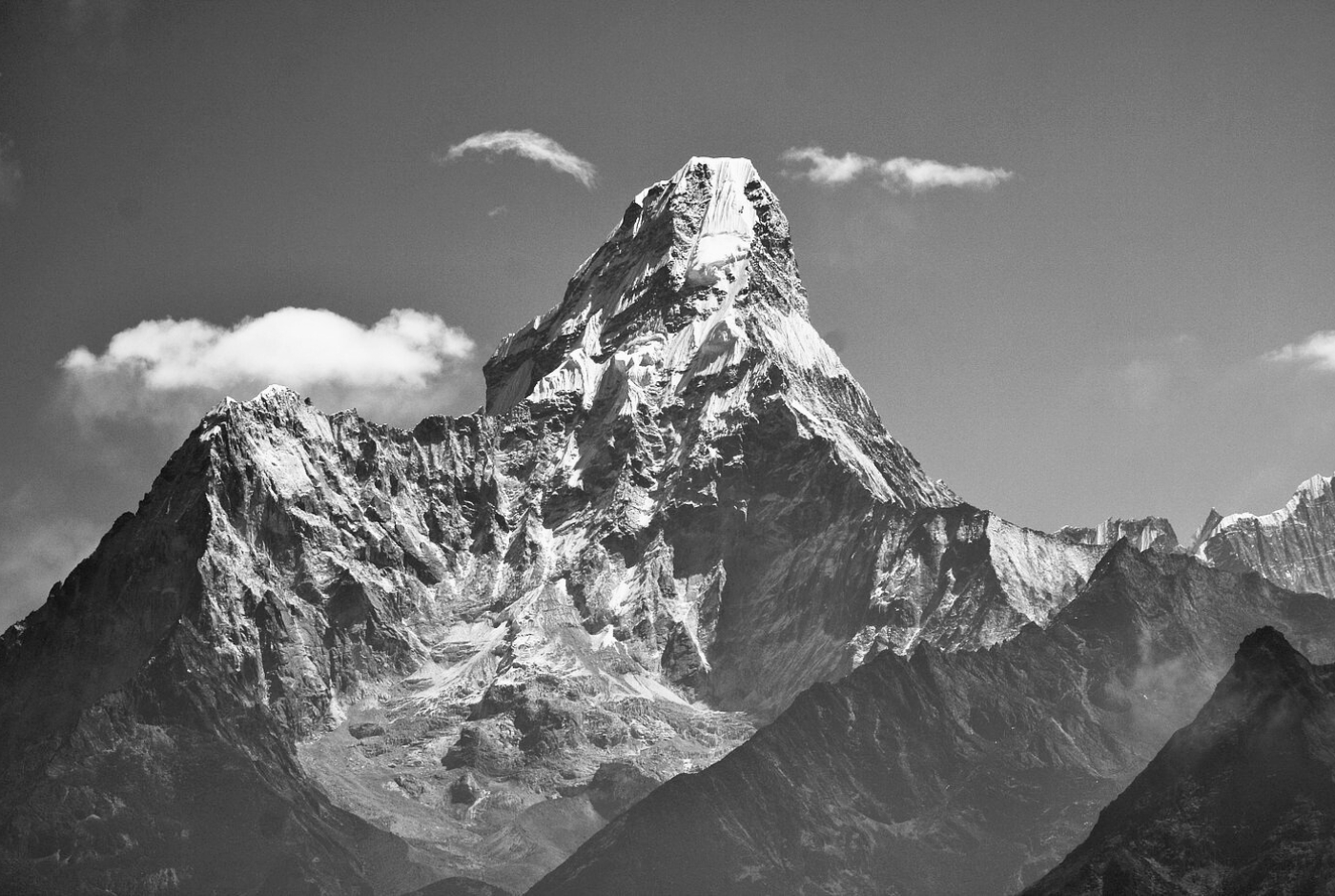
Can you hike Everest Base Camp in the summer?
Yes, it is possible to hike to Everest Base Camp during the summer months of June through August, although there are certain compromises. This time of year coincides with the peak of the monsoon season, bringing heavy rain, muddy trails, and a lack of mountain views due to dense cloud cover. However, if you're equipped with the proper rain gear and don't mind getting a little wet, trekking can still be a manageable experience.
Popular Packages in the Everest Region
The Everest Base Camp trek is one of the most well-liked treks in the Everest region, along with the Gokyo Lakes Trek and the Three Passes Trek. Each of these hikes offers a unique experience with varying levels of reward and difficulty. The serene beauty of high-altitude lakes can be seen on the Gokyo Lakes Trek. The Three Passes Trek offers hikers challenging passes that reward them with striking views, while the Base Camp Trek offers the well-known views of Everest. Any of these adventures will be unforgettable because regardless of the trek you select, each route immerses you in the region's rich culture and stunning landscapes.
What are the advantages of trekking in spring?
In Nepal, spring arrives gradually, bringing balance and softening the paths. The weather during this season makes the trek easier, with mild temperatures inviting trekkers to travel comfortably under clear skies. Trekking to Everest Base Camp in spring (March-May) offers numerous advantages, primarily due to the consistent and pleasant weather conditions.
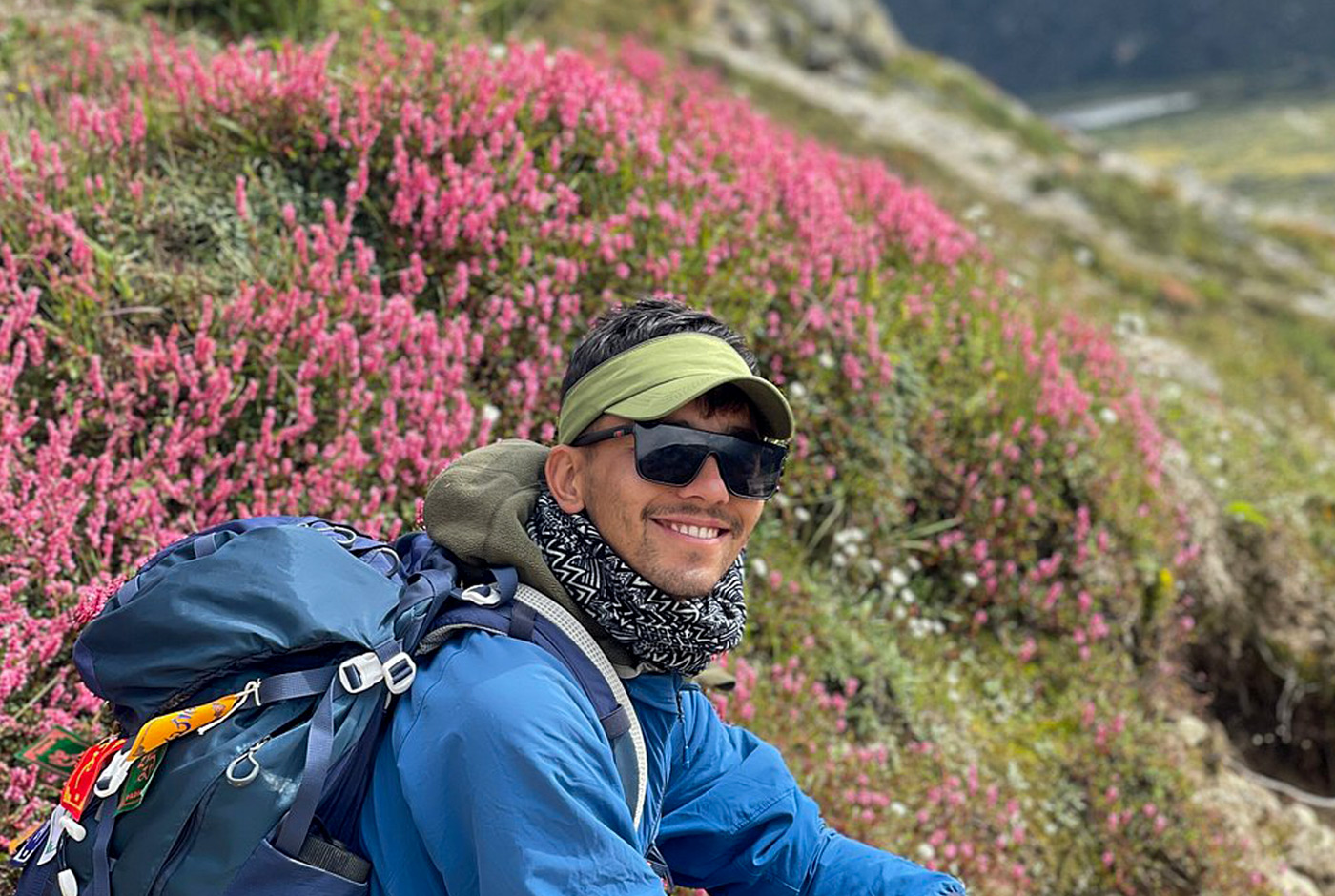
You can expect clear skies and warm daytime temperatures during this time, creating a lovely springtime climate. Rain is less likely, making the hike more enjoyable. Trekking is more comfortable at lower elevations because daytime temperatures usually range from 10 to 15°C. Even though it can get cold in the evenings, especially at night, the day's warmth facilitates the climb. The decreased likelihood of rain or snow in the spring ensures a more pleasant and dry hiking experience.
Hiking in the spring is more pleasing and dry because rain or snow is less likely. Furthermore, the weather is usually stable and predictable, which makes planning easier and lowers the possibility of unfavorable cancellations or delays brought on by inclement weather. Bright rhododendron blooms are another springtime addition that gives the surroundings a splash of color.
The appeal of the trek is increased by the breathtaking views of the highest peaks and valleys that are visible when the skies are clear. Consistent weather increases the likelihood of a successful hike, reducing the likelihood of cancellations or delays and allowing one to appreciate the beauty of the journey fully.
Conclusion
Everest Base Camp should be on your bucket list if it isn't already. This trek is a challenging journey with more than breathtaking views; it changes you. You can start this adventure anytime, but the spring (March-May) and fall (October-November) seasons usually provide the best experiences. During these times, the trails are colorful, the skies are clearer, and the weather is more consistent, with other hikers and rhododendrons in bloom.
Standing at the base of Mount Everest is a humble experience that makes one feel its overwhelming presence. The journey will accomplish your ultimate goal, which is about the stories you gather, the people you meet, and your growth. Every step becomes a lesson in endurance as the journey pushes your boundaries and builds resilience for an incredible trekking journey.
Gear up for an incredible adventure that will leave a lasting impression on your lifetime with knowledgeable guides by your side. Make your trekking dreams come true by joining the Nepal Hiking Team right now —every step is a story waiting to be told! Ensure you have everything you need for this once-in-a-lifetime journey in Nepal. With the best tour operator in Nepal by your side, Nepal Hiking Team, you'll discover the magic of the Himalayas like never before—let's make memories that will last a lifetime! Put on your shoes and prepare yourself. Gather the necessities for an experience that will last a lifetime.



Post a Comment